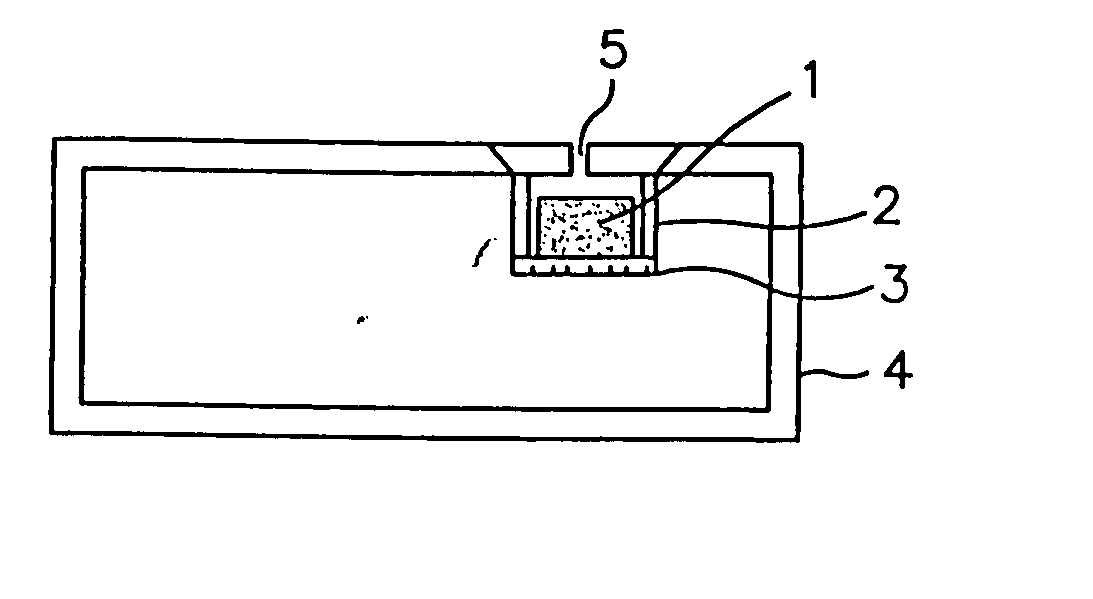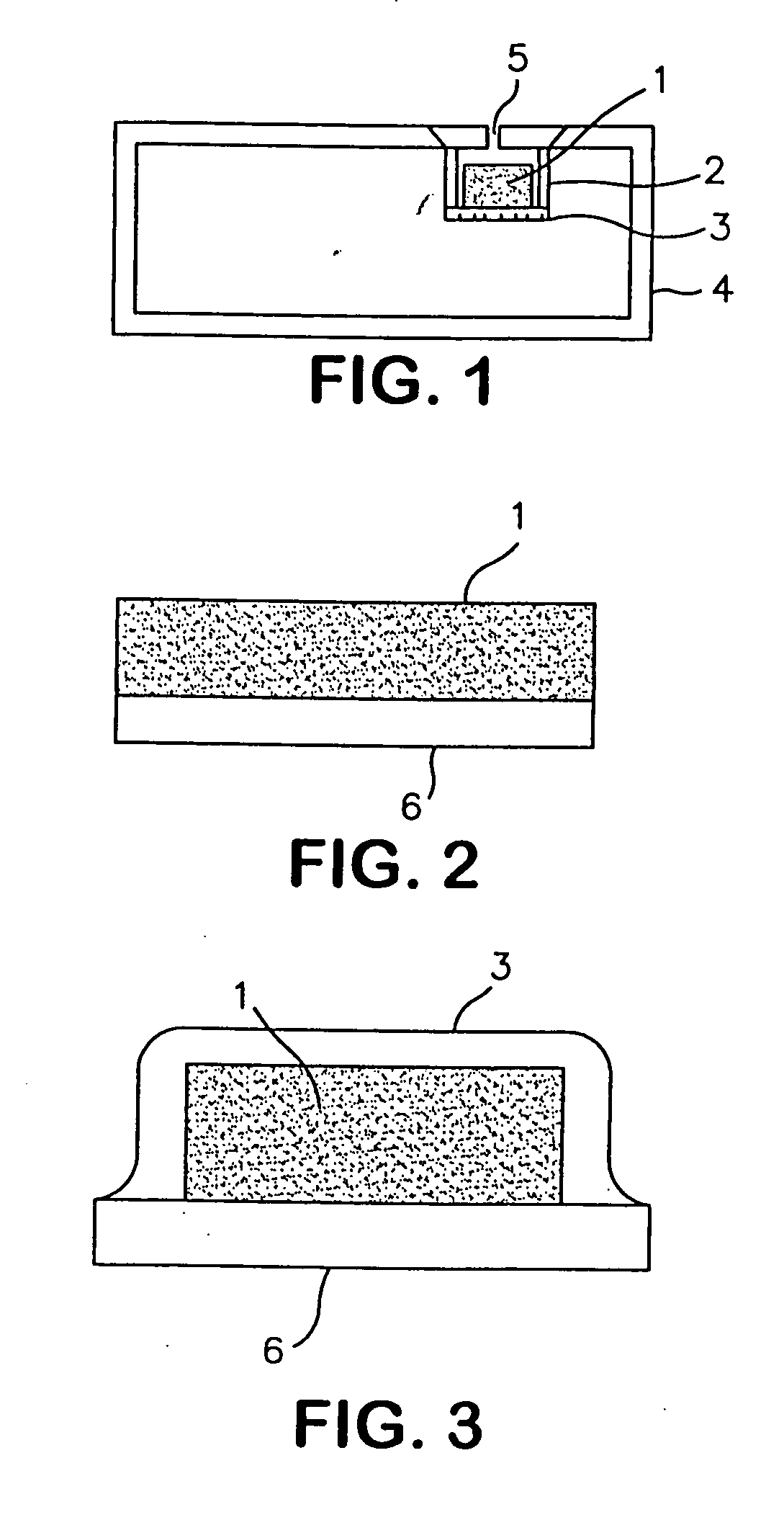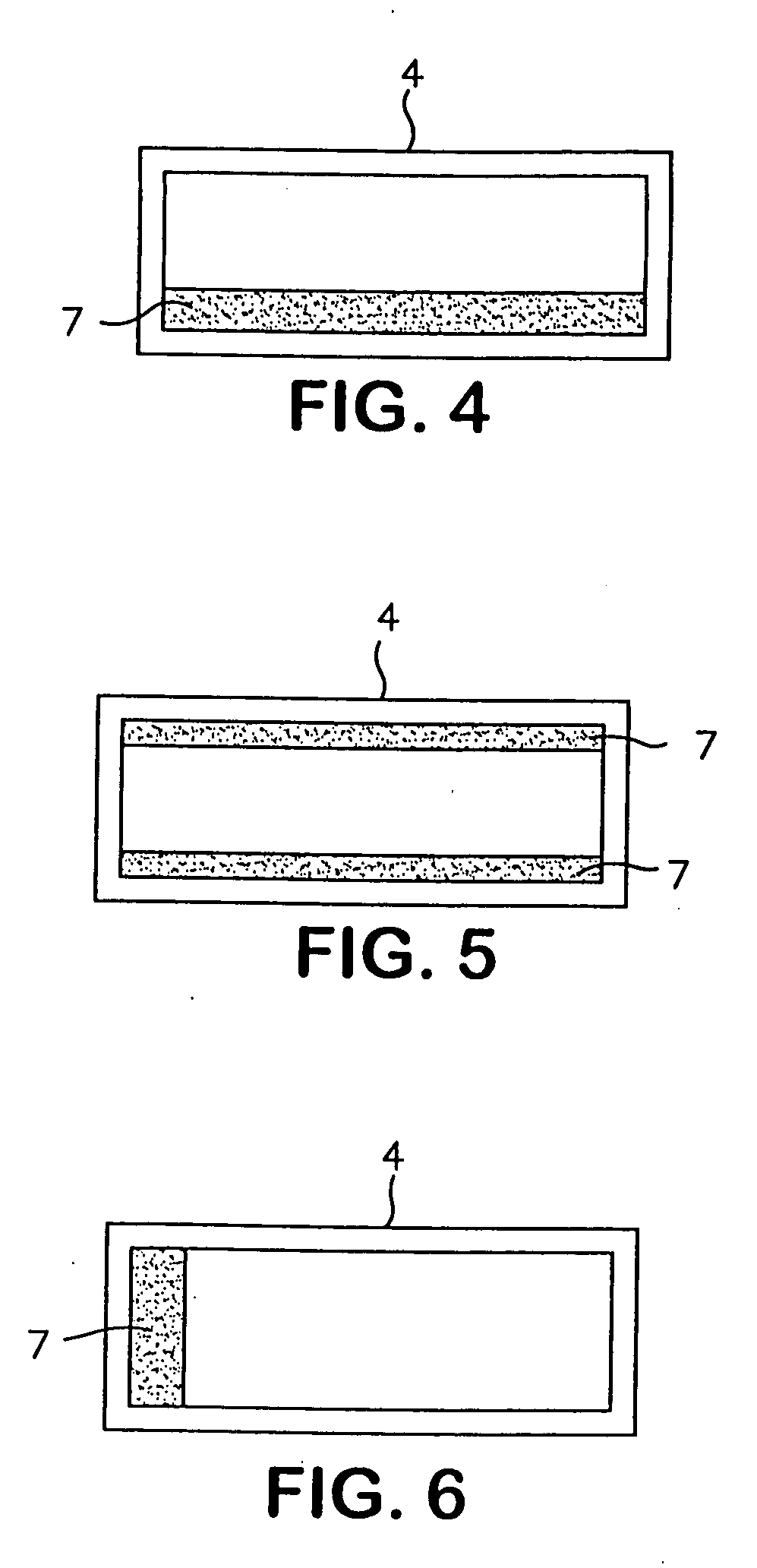Adsorbent-formed object and an adsorbent unit
a technology of molded objects and adsorbents, applied in the direction of transportation and packaging, other chemical processes, separation processes, etc., can solve the problems of optical or other equipment degrading over time, affecting the service life of equipment, and difficult to keep desiccant means isolated from the organic el structure within the cas
- Summary
- Abstract
- Description
- Claims
- Application Information
AI Technical Summary
Benefits of technology
Problems solved by technology
Method used
Image
Examples
example 1
[0133] Under an inert gas (nitrogen) atmosphere, methyl oleate (absorption-regulating substance, UNISTAR M-182A from NOF Corp.) was added in an amount of 5 wt % to powdered strontium oxide (granular adsorbent, 325-15 ex Nacalai Tesque) and mixed evenly. Under nitrogen the resultant mixture was combined with activated carbon (processing aid A-BAC PW from Kureha Chemical Industry, 15 μm mean particle size) and PTFE fine powder (6J from Mitsui DuPont Fluorochemical, 200 μm mean particle size). Mixture ratios, on a weight basis, were 1 part activated carbon and 1 part PTFE fine powder to 8 parts granular adsorbent / absorption-regulating substance mixture. The resultant mixture was compounded with 18 wt % cyclic organopolysiloxane (molding aid, KF994 ex Shin-Etsu Chemical). The compound was subjected to preforming (pressure: 0.3 MPa, time: 1 min., temp. 25° C.) and then to ram extrusion (pressure: 10 MPa, extrusion speed 550 mm / min., temp. 50° C.) to produce a 2 mm thick sheet profile. Th...
example 2
[0139] Adsorbent unit No. 2 was prepared in the same manner as in Example 1, except for combining the calcium hydroxide powder (038-16295 from Wako Pure Chemical) heat treated under nitrogen (580° C., 5 hr) (in other words, calcium oxide powder) with the same powdered strontium oxide used in Example 1, in a 4:6 weight ratio under nitrogen; and changing the amount of the same methyl oleate used in Example 1 to 7 wt %.
[0140] The resultant adsorbent unit No. 2 was tested for percentage moisture removal in the same manner as in Example 1. Results are given in FIG. 23. From the graph in FIG. 23 it was calculated that it took 19 hours for percentage moisture removal by adsorbent unit No. 2 to reach ≦30%.
[0141] Using adsorbent unit No. 2, an organic EL element No. 2 was fabricated in the same manner as in Example 1, and evaluated for degradation over time in the same manner as in Example 1. Organic EL structure No. 2 experienced substantially no decrease in light emitting area, demonstra...
example 3
[0142] Under nitrogen, methyl oleate (absorption-regulating substance, UNISTAR M-182A from NOF Corp.) was added in an amount of 5 wt % to powdered strontium oxide (granular adsorbent, 325-15 ex Nacalai Tesque) and mixed evenly. Under nitrogen the resultant mixture was combined with activated carbon (processing aid A-BAC PW from Kureha Chemical Industry, 15 μm mean particle size) and PTFE fine powder (6J from Mitsui DuPont Fluorochemical, 200 μm mean particle size). Mixture ratios, on a weight basis, were 5 parts activated carbon and 10 parts PTFE fine powder to 85 parts granular adsorbent / absorption-regulating substance mixture. The resultant mixture was calendered to give a sheet of approximately 0.2 mm thickness (adsorbent molded article No. 3).
[0143] Using the resultant adsorbent molded article No. 3, adsorbent unit No. 3 was produced in the same manner as in Example 1.
[0144] Using adsorbent unit No. 3, an organic EL element No. 3 was fabricated in the same manner as in Example...
PUM
| Property | Measurement | Unit |
|---|---|---|
| volume | aaaaa | aaaaa |
| volume | aaaaa | aaaaa |
| size | aaaaa | aaaaa |
Abstract
Description
Claims
Application Information
 Login to View More
Login to View More - R&D
- Intellectual Property
- Life Sciences
- Materials
- Tech Scout
- Unparalleled Data Quality
- Higher Quality Content
- 60% Fewer Hallucinations
Browse by: Latest US Patents, China's latest patents, Technical Efficacy Thesaurus, Application Domain, Technology Topic, Popular Technical Reports.
© 2025 PatSnap. All rights reserved.Legal|Privacy policy|Modern Slavery Act Transparency Statement|Sitemap|About US| Contact US: help@patsnap.com



